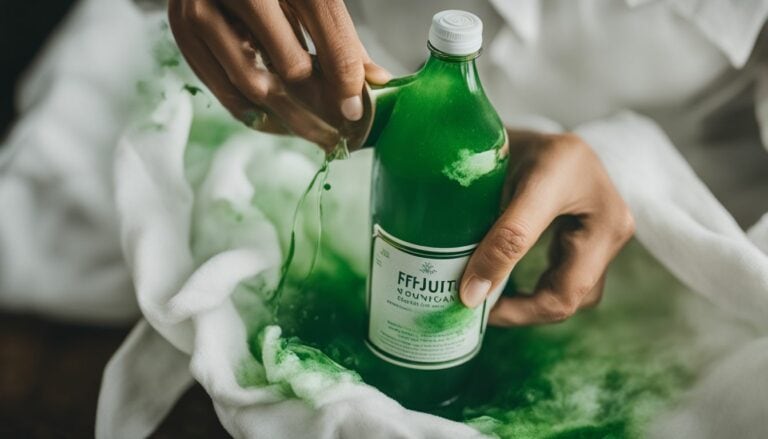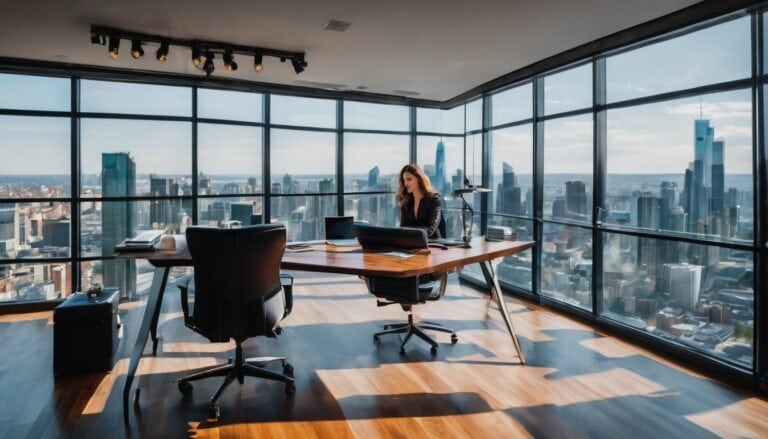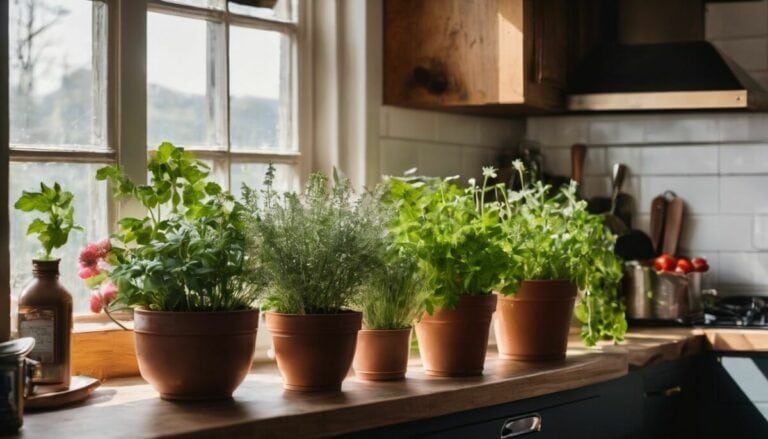gardening in an apartment: Beginner’s Guide
Did you know that apartment gardens and rooftop gardens have become a popular trend for those with a green thumb in small urban spaces? Gardening outdoor plants is now a common practice. It’s true! More and more people are embracing the idea of planting outdoor plants in their apartment gardens to bring nature into their living spaces.
Rooftop gardens have become popular for this purpose, with individuals using planters to grow a variety of plants. But it’s not just about adding some indoor apartment gardening and vegetable garden greenery to your home decor. Apartment gardening offers a multitude of benefits for both your physical and mental well-being, including planting and growing your own food. By cultivating vegetables from seeds, you can enjoy the satisfaction of nurturing and harvesting your own fresh produce.

Imagine this: stepping out onto your balcony or finding a cozy corner in your apartment where you can plant and nurture a thriving garden filled with food and flowers, even in a small space. Not only will indoor apartment gardening provide you with fresh food and flowers, but it will also give you a sense of fulfillment and accomplishment as you watch your plants grow from planting tiny seeds to delicious salad greens.
But here’s the surprising part – apartment gardening goes beyond just planting flowers and growing food. It also helps reduce waste and fulfills the need for a green space. Studies have shown that planting a vegetable garden and engaging in indoor apartment gardening with food can have a significant positive impact on our mental health. Being surrounded by nature, even in small doses, can be beneficial. It reduces stress levels, improves mood, and boosts creativity.
So, if you’ve ever dreamed of having your own vegetable garden but thought you would need to live in a house with a yard, think again!
Benefits and Challenges of Gardening in a Small Space

Enjoy Fresh Herbs and Vegetables Without a Backyard Garden
Who says you need a sprawling backyard to enjoy the delights of homegrown herbs and vegetables? With apartment gardening, you can get the taste of fresh produce right at your fingertips. Imagine plucking aromatic basil leaves or juicy tomatoes from your very own indoor garden to enhance the flavors of your culinary creations. Not only does this provide a convenient source of organic ingredients, but it also allows you to have complete control over what goes into your food.
By utilizing small spaces creatively, such as windowsills, balconies, or even vertical gardens on walls, you can cultivate a wide variety of plants that thrive in confined areas. Compact herb gardens can be easily set up using hanging pots or tiered planters, making efficient use of limited space. Growing microgreens indoors is an excellent way to add a burst of freshness to salads and sandwiches throughout the year.
Overcoming Limited Space Challenges with Creative Solutions

Gardening in an apartment may present some challenges due to tight spaces, but with a little ingenuity and resourcefulness, these hurdles can be overcome. Vertical gardening is one such solution that maximizes space utilization by growing plants vertically instead of horizontally. This technique involves using wall-mounted planters or stacking containers to create lush greenery without encroaching on valuable floor area.
Another creative approach is companion planting—pairing compatible plants together based on their growth habits and nutrient requirements. For instance, combining tall sun-loving plants like tomatoes with trailing herbs like thyme not only optimizes space but also creates an aesthetically pleasing arrangement.
Furthermore, utilizing multi-functional furniture pieces like bookshelves or storage units with built-in planter boxes allows for dual-purpose functionality while adding a touch of greenery to your living space. These innovative solutions not only address the challenge of limited space but also serve as visually appealing decor elements.
Enhancing Air Quality and Reducing Stress through Indoor Plants
Apartments often lack the abundance of fresh air that gardens offer, but gardening indoors can help mitigate this issue. Indoor plants act as natural air purifiers, removing toxins from the atmosphere and increasing oxygen levels. Not only do they improve air quality, but they also enhance the overall ambiance of your living space with their vibrant foliage.
Moreover, tending to indoor plants has been proven to reduce stress and promote relaxation. The act of nurturing greenery provides a sense of purpose and connection with nature, creating a tranquil environment amidst the hustle and bustle of urban living. Whether it’s a cascading pothos or a resilient snake plant, incorporating these leafy companions into your apartment can bring immense benefits to both your physical and mental well-being.
Balancing the Need for Sunlight with the Constraints of Apartment Living
While sunlight is essential for plant growth, apartment dwellers often face limitations. However, there are several strategies you can employ to ensure your indoor garden thrives even in low-light conditions.
Firstly, choose plants that are well-suited for shade or partial shade environments. Some examples include ferns, peace lilies, and spider plants. These varieties have adapted to thrive under lower light intensity and can flourish without direct sunlight.
Essential Tips for Apartment Gardening Beginners

Start small with easy-to-grow plants like herbs or succulents
Starting small is key, especially for beginners. You don’t need a large outdoor space to enjoy the benefits of gardening. Begin by choosing easy-to-grow plants that thrive in indoor environments, such as fresh herbs or succulents.
Fresh herbs are not only a great addition to your meals but also relatively easy to grow in an apartment setting. They require minimal space and can be grown on windowsills or in small pots. Some popular options include basil, mint, rosemary, and parsley. These herbs not only add flavor to your dishes but also provide a delightful aroma in your living space.
Succulents are another excellent choice for apartment gardening beginners. These hardy plants store water in their leaves, making them more forgiving if you forget to water them occasionally. They come in various shapes and sizes, adding a touch of greenery and beauty to any room.
Starting with these easy-to-grow plants will help build your confidence as you learn the basics of apartment gardening. Plus, the joy of harvesting fresh herbs or admiring the unique shapes of succulents will keep you motivated along the way.
Choosing the right containers and soil for successful apartment gardening

In apartment gardening, selecting the appropriate containers and soil is crucial for successful plant growth. Since you’re working within limited space, choosing compact containers that fit well on windowsills or balconies is essential.
Consider using lightweight plastic pots or hanging baskets that won’t put too much strain on your apartment’s structure while still providing adequate drainage. Hanging baskets can be particularly useful if you have limited floor space but ample vertical space available.
Opt for high-quality potting mixes specifically formulated for container gardening. These mixes are well-draining yet retain enough moisture for healthy root development. Avoid using garden soil, as it tends to become compacted in containers and may not provide the ideal growing conditions for your plants.
Consider incorporating organic matter into your potting mix. This can be achieved by adding compost or well-rotted manure. Organic matter improves soil structure, enhances water retention, and provides essential nutrients to support plant growth.
Understanding watering needs and avoiding overwatering or underwatering

Proper watering is crucial for the success of your apartment garden. It’s important to understand the unique watering needs of different plants and avoid common mistakes like overwatering or underwatering.
To determine when to water your plants, check the moisture level of the soil regularly. Stick your finger about an inch deep into the soil; if it feels dry at that depth, it’s time to water. However, if it still feels moist, hold off on watering for a little longer.
Overwatering is a common mistake that can lead to root rot and other issues. Remember that most indoor plants prefer slightly drier conditions compared to outdoor gardens. Ensure proper drainage by using pots with drainage holes and avoid leaving standing water in saucers beneath your containers.
On the other hand, underwatering can cause stress and stunted growth in plants. Monitor your plants closely and adjust their watering schedule based on their specific needs. Factors such as temperature, humidity levels, and individual plant requirements will influence how often you need to water.
Maximizing Space: Utilizing Vertical Gardens in Apartments

Hanging Planters and Trellises: Making the Most of Vertical Wall Space
One of the most effective ways to maximize space when gardening in an apartment is by utilizing vertical wall space. By installing hanging planters or trellises, you can transform your walls into a lush green backdrop. These innovative solutions not only add visual interest to your living area but also provide ample room for plants to thrive.
Hanging planters are an excellent option for small spaces as they allow you to grow a variety of plants without taking up valuable floor space. You can hang them from hooks on the wall or even suspend them from the ceiling, creating a beautiful cascading effect. Consider using planters with built-in reservoirs to ensure proper drainage and hydration for your plants.
Trellises, on the other hand, offer support for climbing plants such as tomatoes or beans. By training these plants to grow vertically, you can maximize your yield while saving precious ground space. Install trellises against sturdy walls or fences and guide the vines upwards using ties or clips. Not only will this technique save you space, but it will also create a stunning vertical garden that adds charm to your apartment.
Creating Green Oases on Balconies and Windowsills with Vertical Gardens

If you have access to a balcony or windowsill, vertical gardens can transform these areas into vibrant green oases. With a little creativity and some well-chosen planters, you can make the most of your outdoor space.
Consider using modular systems that allow for easy customization and flexibility in arranging your vertical garden. These systems often feature stackable containers that fit together like building blocks, maximizing every inch of available space. Fill each planter with microgreens or vegetables of your choice and watch as they flourish in their compact home.
For balconies, railing planters are an excellent option as they attach securely to the railing, leaving you with more floor space to enjoy. Fill them with a variety of plants, from colorful flowers to aromatic herbs, and create a delightful oasis just outside your door.
Windowsills also offer great potential for vertical gardening. Utilize shelves or specially designed window boxes that attach to the window frame, allowing you to grow plants at eye level. Take advantage of natural sunlight streaming through the windows and cultivate an array of vegetables or herbs right in your kitchen.
Optimizing Space Utilization with Modular Systems
Incorporating modular systems into your apartment can revolutionize how you utilize space for gardening. These versatile systems are designed to make the most of limited areas by maximizing verticality and minimizing waste.
Modular shelving units provide ample room for planters while creating an aesthetically pleasing display. You can stack multiple shelves on top of each other, creating a vertical garden that reaches towards the ceiling. Arrange planters at different heights to add depth and visual interest to your space.
Another option is utilizing wall-mounted modular systems that allow you to hang planters directly on the wall. These systems often feature adjustable brackets or hooks, giving you the flexibility to rearrange as needed. By taking advantage of unused wall space, you can transform any bare surface into a thriving garden.
Rooftop gardens are another fantastic way to optimize space utilization in apartment buildings.
Choosing the Right Plants for Apartment Gardening Success

Low-Maintenance Plants for Indoor Environments
One of the key factors to consider is choosing plants that require minimal maintenance. After all, not everyone has the luxury of spending hours tending to their plants each day. Opting for low-maintenance plants ensures that even those with a busy lifestyle can still enjoy the benefits of indoor gardening.
Succulents are an excellent choice for apartment dwellers looking for easy-to-care-for plants. These resilient beauties store water in their leaves, making them highly drought-tolerant and perfect for forgetful waterers. With a wide variety of shapes, sizes, and colors available, succulents can add a touch of natural elegance to any living space.
Another option is to explore flowering plants that thrive indoors without demanding excessive attention. African violets, peace lilies, and spider plants are just a few examples of flowering plants that can brighten up your apartment while requiring minimal care. These hardy varieties will reward you with stunning blooms without needing constant pampering.
Growing Compact Varieties of Fruits, Vegetables, and Flowers

Who says you need a sprawling garden to grow your own food? Even in an apartment setting, it’s possible to cultivate compact varieties of fruits and vegetables that are well-suited for limited spaces.
Consider investing in dwarf fruit trees or berry bushes specifically bred for container gardening. These miniature versions pack all the flavor and goodness of their larger counterparts but take up much less room. Imagine plucking juicy strawberries or crisp apples right from your very own indoor garden!
In addition to edible plants, don’t forget about incorporating compact flowering varieties into your apartment oasis. Miniature roses or bonsai trees can provide bursts of color and fragrance while taking up minimal space on your windowsill or balcony.
Finding Shade-Tolerant Plants for Limited Sunlight
Apartments with limited sunlight can pose a challenge for aspiring gardeners. However, there are plenty of shade-tolerant plants that can thrive even in the dimmest corners of your living space.
If you have north-facing windows or areas with little direct light, consider opting for plants that naturally grow in shaded environments. Ferns, pothos, and snake plants are popular choices due to their ability to adapt to low-light conditions. These green wonders not only add a touch of nature but also help purify the air within your apartment.
To maximize the available light, it’s essential to keep your shade-tolerant plants clean and dust-free. Wiping their leaves regularly with a damp cloth ensures they can absorb as much light as possible and stay healthy.
Incorporating Ornamental Plants for Added Beauty
While edible plants are undoubtedly rewarding, don’t overlook the beauty that ornamental plants can bring to your apartment oasis. Adding some flair with visually appealing foliage and flowers will transform your living space into a tranquil haven.
Herbs such as lavender, rosemary, or mint not only smell delightful but also offer attractive foliage that adds visual interest. Place them in decorative planters on your windowsill or hang them from hooks near your kitchen area for easy access while adding a touch of style.
Consider incorporating flowering vines like jasmine or passionflower for an enchanting display.
Ensuring Adequate Light for Indoor Apartment Gardens

Creating a thriving indoor apartment garden requires careful consideration of light requirements. While apartments may not offer the same access to direct sunlight as outdoor gardens, there are several strategies you can employ to ensure your plants receive adequate light for healthy growth.
Maximizing natural light by placing plants near windows
One of the simplest ways to provide sufficient light for your indoor apartment garden is by placing your plants near windows. Windows allow natural sunlight to filter through and provide essential energy for photosynthesis. When positioning your plants, consider the direction and intensity of sunlight that each window receives throughout the day.
South-facing windows tend to receive the most direct sunlight, making them ideal for sun-loving plants like herbs or succulents. East-facing windows provide gentle morning sun, which is beneficial for plants that prefer indirect light such as peace lilies or ferns. West-facing windows offer afternoon sun, while north-facing windows generally have lower light levels and are better suited for shade-tolerant plants.
Supplementing natural light with artificial grow lights if needed

If your apartment lacks sufficient natural light or if you want to grow plants that require more intense lighting conditions, supplementing with artificial grow lights can be highly effective. LED grow lights are a popular choice among indoor gardeners due to their energy efficiency and ability to emit specific wavelengths of light tailored to plant needs.
When selecting grow lights, consider the color spectrum they emit. Most plants require both blue and red wavelengths for optimal growth. Blue light promotes vegetative growth and is suitable during the early stages of plant development, while red light encourages flowering and fruiting. Position the lights close enough to your plants so they receive an adequate amount of artificial illumination without burning them.
Avoiding direct sunlight damage by filtering light through sheer curtains
While exposure to direct sunlight is beneficial for many indoor plants, some delicate varieties can suffer from sunburn or leaf damage when exposed to intense rays. To protect your plants, you can filter the light by using sheer curtains or blinds. These materials allow sunlight to pass through while reducing its intensity.
Sheer curtains are particularly effective for plants that prefer bright, indirect light or those that thrive in partially shaded conditions. By diffusing the sunlight, you can create a more favorable environment for your apartment garden without compromising on natural light.
Rotating plant positions regularly to ensure even light exposure
To ensure all your indoor plants receive equal access to light, it is crucial to rotate their positions regularly. Plants have a natural tendency to grow towards the direction of light, which can result in uneven growth and potentially weaken certain areas of the plant over time.
By periodically rotating your plants, you encourage them to grow more uniformly and prevent any leaning or stretching towards the light source. This practice also helps expose different sides of the plant to available light, ensuring each part receives an adequate amount of energy for overall health and vitality.
Watering and Soil Care for Apartment Gardens

Balancing watering frequency to prevent under or overwatering
Finding the right balance. Both under and overwatering can have detrimental effects on their growth, so it’s important to strike a balance.
To determine the optimal watering frequency, consider factors such as the type of plant, pot size, and environmental conditions. Generally, it’s best to water thoroughly but infrequently rather than giving small amounts of water frequently. This allows the roots to absorb moisture deeply while also promoting healthy root development.
One effective method is the finger test. Simply insert your finger about an inch into the soil near the base of the plant. If it feels dry at that depth, it’s time to water. However, if it still feels slightly moist, hold off on watering for another day or two.
Choosing well-draining soil mixes for potted plants
The choice of garden soil plays a vital role in maintaining healthy plants in an apartment setting. Unlike traditional gardens where plants have access to natural soil with excellent drainage properties, potted plants rely solely on the soil mix within their containers.
Opt for well-draining soil mixes specifically formulated for container gardening. These mixes typically consist of a combination of organic matter such as compost or peat moss along with materials like perlite or vermiculite that enhance drainage.
Good drainage is essential because excess water can lead to root rot and other issues. A well-draining soil mix ensures that water flows through easily while also providing adequate air circulation around the roots.
Monitoring humidity levels and using pebble trays to increase moisture
Maintaining appropriate humidity levels in an apartment garden can be challenging due to indoor heating or air conditioning systems that tend to reduce moisture in the air. However, certain plants thrive in high humidity environments, making it important to monitor and adjust humidity levels accordingly.
To increase humidity around your plants, consider using pebble trays. Simply fill a shallow tray with small pebbles and add water until it reaches just below the surface of the pebbles. Place your potted plants on top of the pebbles, ensuring that the water level does not touch the bottom of the pots. As the water evaporates, it creates a humid microclimate around the plants.
Another option is to group plants together. When grouped closely, they create their own mini ecosystem where moisture released by one plant benefits others nearby.
Preventing water damage by using saucers or trays under pots
Watering containers indoors can sometimes result in accidental spills or leaks that can cause damage to your apartment’s flooring or furniture. To prevent such mishaps, it’s advisable to use saucers or trays underneath your pots.
Saucers are shallow dishes placed beneath individual pots to catch excess water runoff. They come in various sizes and materials, allowing you to choose one that suits your aesthetic preferences while also serving its purpose effectively.
Trays, on the other hand, are larger platforms that can accommodate several pots at once. They offer more protection against spills and can be particularly useful if you have multiple plants grouped together.
Remember to regularly check these saucers or trays for standing water and empty them promptly to prevent root rot or mosquito breeding grounds.
The Possibilities and Rewards of Apartment Gardening

Congratulations on completing the sections about apartment gardening! You now have a solid foundation to embark on your own green journey within the limited space of your apartment. By embracing the possibilities of apartment gardening, you can transform your living space into a thriving oasis that brings joy, beauty, and even fresh produce into your daily life.
Now that you have learned about the benefits and challenges of gardening in a small space, essential tips for beginners, maximizing space with vertical gardens, choosing the right plants, and ensuring adequate light and soil care, it’s time to put your newfound knowledge into action. Start by envisioning how you want your apartment garden to look and feel. Do you crave an herb garden in your kitchen window or dream of lush hanging baskets cascading from your balcony? Whatever it may be, take that first step towards creating your green haven today!
FAQs
Can I grow vegetables in my apartment?
Absolutely! Many vegetables can thrive in containers indoors or on balconies. Choose compact varieties like cherry tomatoes, salad greens, peppers, or herbs such as basil and parsley. Just make sure they receive enough sunlight and proper care.
How often should I water my indoor plants?
The frequency of watering depends on various factors like plant type, pot size, temperature, humidity levels, etc. As a general rule of thumb, check the moisture level by sticking your finger about an inch into the soil. If it feels dry at that depth, it’s time to water.
Can I use artificial lighting for my indoor garden?
Yes! If natural light is limited in your apartment or during winter months when daylight hours are shorter, supplementing with artificial lighting is a great option. LED grow lights are energy-efficient and provide the necessary spectrum for healthy plant growth.
What can I do if pests invade my apartment garden?
Prevention is key! Regularly inspect plants for signs of pests and take action at the first sighting. Introduce natural pest control methods like neem oil or insecticidal soaps. If the infestation persists, isolate affected plants and consider seeking professional advice.
How do I fertilize my apartment plants?
Choose a balanced, water-soluble fertilizer specifically formulated for indoor plants. Follow the instructions on the package for proper dilution and application frequency. Remember, it’s better to under-fertilize than over-fertilize to avoid damaging your plants.
Can I compost in an apartment?
Yes! Vermicomposting is a great option for apartment dwellers. Use a worm bin to compost kitchen scraps like fruit peels, coffee grounds, and vegetable trimmings. The worms will break down the organic matter into nutrient-rich castings that can be used as plant food.
What are some low-maintenance plants for busy apartment dwellers?
If you have a hectic schedule but still want to enjoy the benefits of indoor gardening, consider low-maintenance plants like pothos, snake plant, ZZ plant, or succulents. These beauties require minimal care and can thrive even if you occasionally forget to water them.
Happy gardening!







